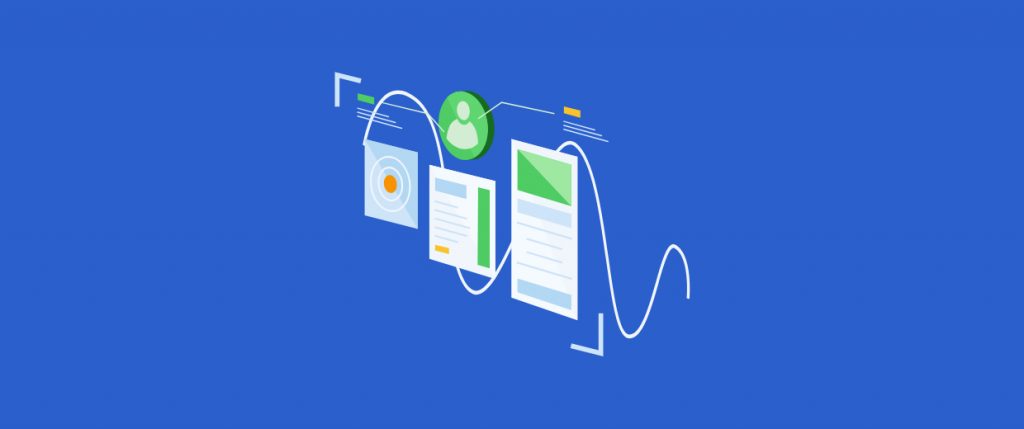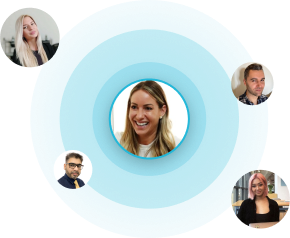Have you ever had a feeling that metrics services like Google Analytics or Heap Analytics work in reverse once you want to start analysing the customer journey?
For example, instead of seeing the actual customer journey on the website you can only track the funnels you set up yourself.
Or seeing the generalised reports instead of single user behaviours unless you purchase a premium Google Analytics subscription (which costs a minimum of 50.000€ per year).
Even when you have a premium GA account, the data is kept in BigQuery servers so you cannot download it on your computer, you can only work within a BigQuery interface.
Knowing patterns of visitor behaviour is crucial for improving different areas of your website performance like UX design, website content, your product itself and its digital representation.
Hotjar recordings can give a lot of insights about
- user onboarding
- the journey that you’ve created for your key persona
- the way your visitors consume content
- reasons why they stay on or leave particular pages
- why they exit or return to your website
- how long and how many sessions it takes to convert.
In the screen grab below, you can see some real life visitor insights that we discovered in the checkout flow of one of our clients: a multinational travel insurance provider.
However, if your website has thousands of visitors every day, analysing the videos one by one might get overwhelming.
While HotJar records every event visitors went through on your website with a timestamp on it, it doesn’t give you an opportunity to download the list in a .csv file to analyse.
Let’s be honest – HotJar cannot compete with Netflix in entertainment videos. Watching thousands of similar recordings and making notes of the patterns is not the best use of our time either. It could take literally weeks of full-time work.
But there’s good news!
With the data you collected, it is possible to build clusters of users according to their behaviour.
You can also discover and map typical user journeys and detect behavioural patterns of small groups of visitors. Sounds resourceful, right?
As a data driven agency,we like to analyse all available data so that we have an in-depth understanding of user experience in every interaction with the product or service.
To be able to create insightful growth experiments it is important that we are able to back them with our research findings.
That is why we decided to build a script that discovers typical behaviours of users and places them into groups. And it looks like this:
PS: if reading this article get your spidey senses tingling, give us a call! We’re always looking for data driven marketers to join our nomad agency.
How can you build this script too? Alert: this gets quite technical 🙂
Use the Target column cross-referenced with session ID to build clusters of users according to their journey on the website:
- Filter out the sessions shorter than 30 seconds if you haven’t done it before scraping. Work with the rest of the data.
- Ask your developer to do cluster analysis using DBSCAN algorithm.
It will sort your visitors in clusters according to pages they visited, places on the page they clicked.
Now you have your behavioural clusters. With this knowledge you will be able to see how user behaviour differs.
You can now get these insights from your website data:
- Where do they get stuck?
- What page do they go after they get stuck? How do they decide to find what they need?
- Do they use a live chat? In what cases?
- Which pages do they leave quickly and which pages do they stay on?
- Are there particular sequences of pages that work well?
- What is the most confusing path on the website?
- Are they overloaded with information?
- Are they scanning pages quickly or meticulously reading the content?
- Is there a particular element on the website that is not used in a way it was intended to be used?
- Can you notice sequences of pages they go through before conversion?
- How many sessions it takes them to convert?
- How long do they stay on average on the website?
- Is there any way you could make make the conversion path shorter?
Make sure you watch a sufficient sample of videos from each cluster – there are behaviours that you cannot download into the spreadsheet (like cursor movements) that can give you additional ideas.
When you answer those questions, you will come up with ideas on how to improve the visitor journey on the website.
For example, for our customer, a major travel insurance company, we have noticed that there are two types of visitors – synthetical users are the ones who scan pages and looked at several different products and analytical ones who thoroughly explore one product and follow the funnel step by step.
They behave quite differently – the journey of synthetical users is 2-4 longer as they visit more pages, which means they encounter a lot of information about several insurance policies and have to analyse it and make a decision. We noticed that it was difficult for them and came up with series of experiments to ease the analysis process.
Typical journey of synthetical users
After entering the website users go through initial funnel of questions that form a comparison table of four contracts that suit customer needs best.
Having tendency to scan it quickly without going into details synthetical users prefer to look at the cover details page where the final price is shown at the bottom of the page.
They evaluate 2-4 options but struggle to make the final choice as they forget advantages and disadvantages of the contracts.
Information overload is the main challenge of the consumers of that type.
Typical journey of the analytical users
Analytical visitors on the other hand, consider 1 – 2 options but study them meticulously.
They read all the details of the contract moving cursor under the lines of text. Being responsible shoppers they want to understand how the contract works, getting deep questions that are not answered on the website.
They leave without making a final decision.
The main challenge of analytical users – lack of detailed understanding of the contract.
So what are the growth experiments that we should test based on user behaviour?
Ecommerce checkout flow:
- Since synthetical users check several options before going to the next step in the checkout flow, it is difficult for them to remember the exact details and prices of the contracts. Therefore we are saving them at the bottom of the page:
Asos is using quite a similar technique to give their valued customers an overview of the products they recently viewed.
2. Showing popular options can also help with decision making of synthetical users:
3. Having an option to save the products looked at for later can help us retarget the user when they leave the website before finishing the purchase.
Analytical users on the other hand visit fewer pages and carefully study the details of an offer. They are having a completely different experience within the website. Here are our growth experiments that will help them in the ecommerce checkout flow:
- As analytical users want to dig deep into the products ,they might benefit from pop-ups with tips and suggestions about the different products.
- A lot of them of them count different days on the calendar, so we can add a day counter next to the calendar.
3. A test that we think would be beneficial for both types of users a chatbot that will assist them with during the choice process – it will ask all the details of the trip (like dates, destination, number of travellers etc) and most importantly it will do the comparison process for them explaining their options and suggests contracts that suit customer’s needs.
Overall, we noticed that for a complicated product like travel insurance, real life and real time help would be beneficial to both types of users.
Both behavioural types are looking for answers to their questions and they are consuming a lot of information before they buy.
In order to help them in the decision making process, we have created a live chat module and we will install a chatbot to support them by doing the comparison process.
The chatbot will also explain the different options and pick a contract that fits their profile the best.
Don’t have the developing skills, but you are an Excel master? Here’s the second best option in finding behavioural patterns in Hotjar data:
User ID and Session ID – enable you to see how many sessions it took a particular visitor to convert. Watching the videos will give you understanding what made them come back and what features they explored in every session.
If you cross-reference findings with Dates and Times you can calculate length of customers’ experiences with your product to the exact second.
You can filter out the most popular landing and exit pages. Knowing behaviour on exit pages and reasons for leaving will help to create experiments for user retention at the end of the session.
Using Time per session column you can calculate average session time, videos will give you insights on why it takes some visitors longer to convert.
Time per action – knowing how long it takes a user to take a particular action on the website you can eliminate/add areas on the pages to speed up the process.
New to Hotjar? Here’s what you can get out of it as a beginner:
Visitor heatmaps
- Soon will be integrated with Google Analytics and allow you to track even more data
- Has a function of tracking funnels – you can track specific paths on the website and see how many users followed them
- Has form analysis feature. Analyses visitor’s experience when then fill-in forms on your website.
It counts number of sessions, interactions, conversion rate, number of drop-off, exact questions on which users drop off, average interaction time.
- Hotjar enables feedback polls for website visitors
Curious on how we can identify & optimise the customer journey on your website?
Talk to one of our growth strategist to get started!


